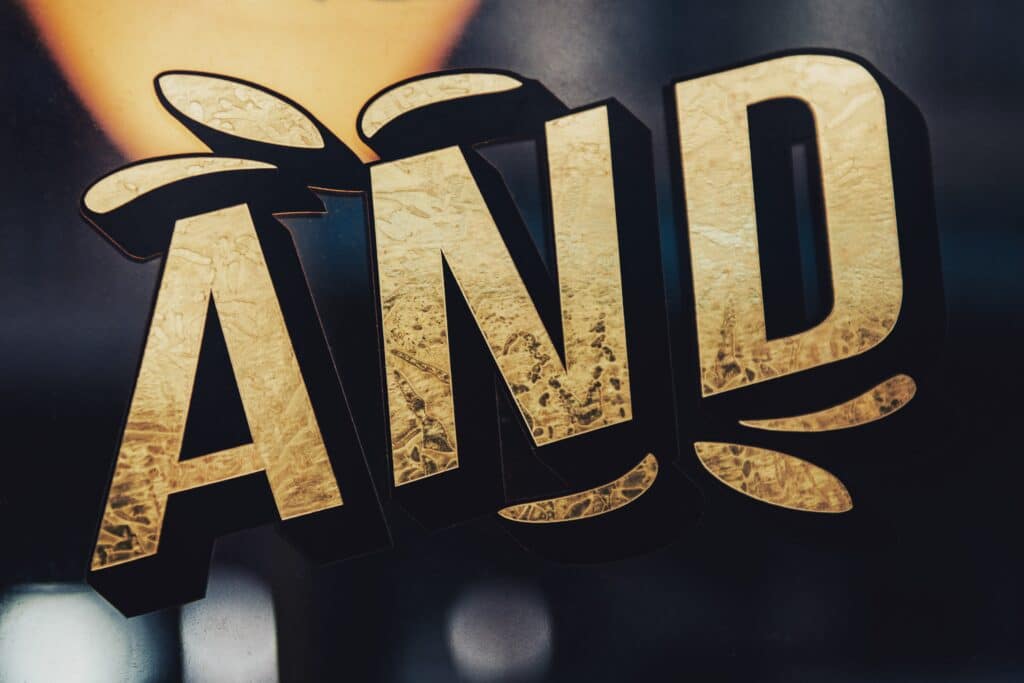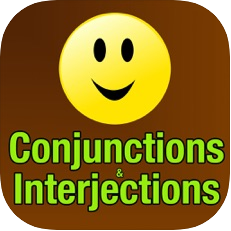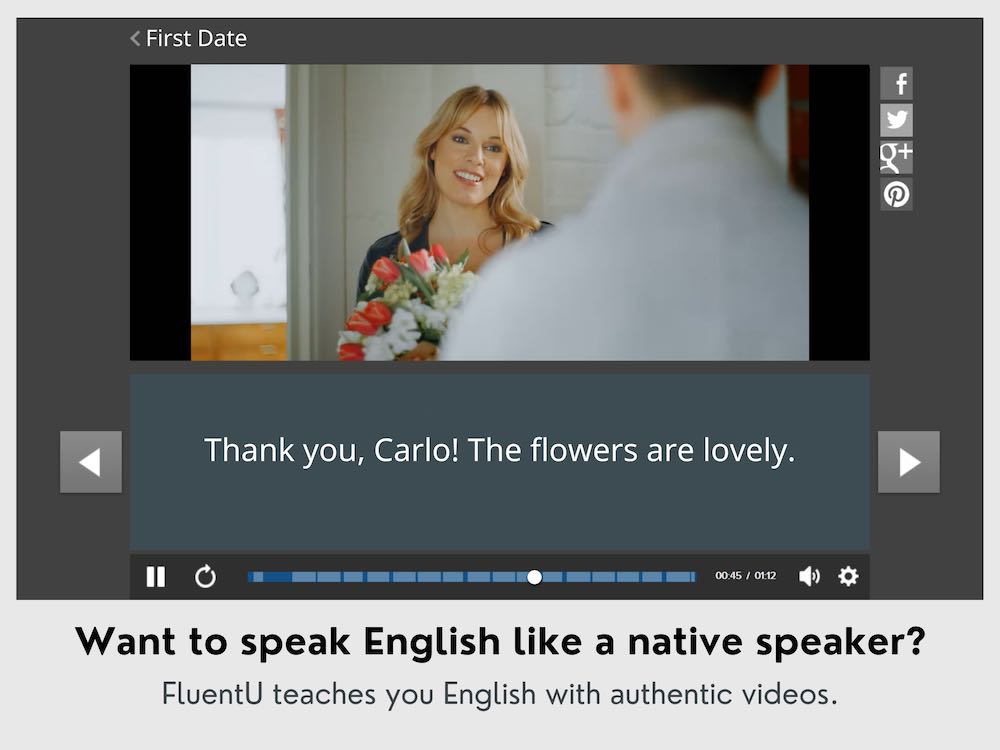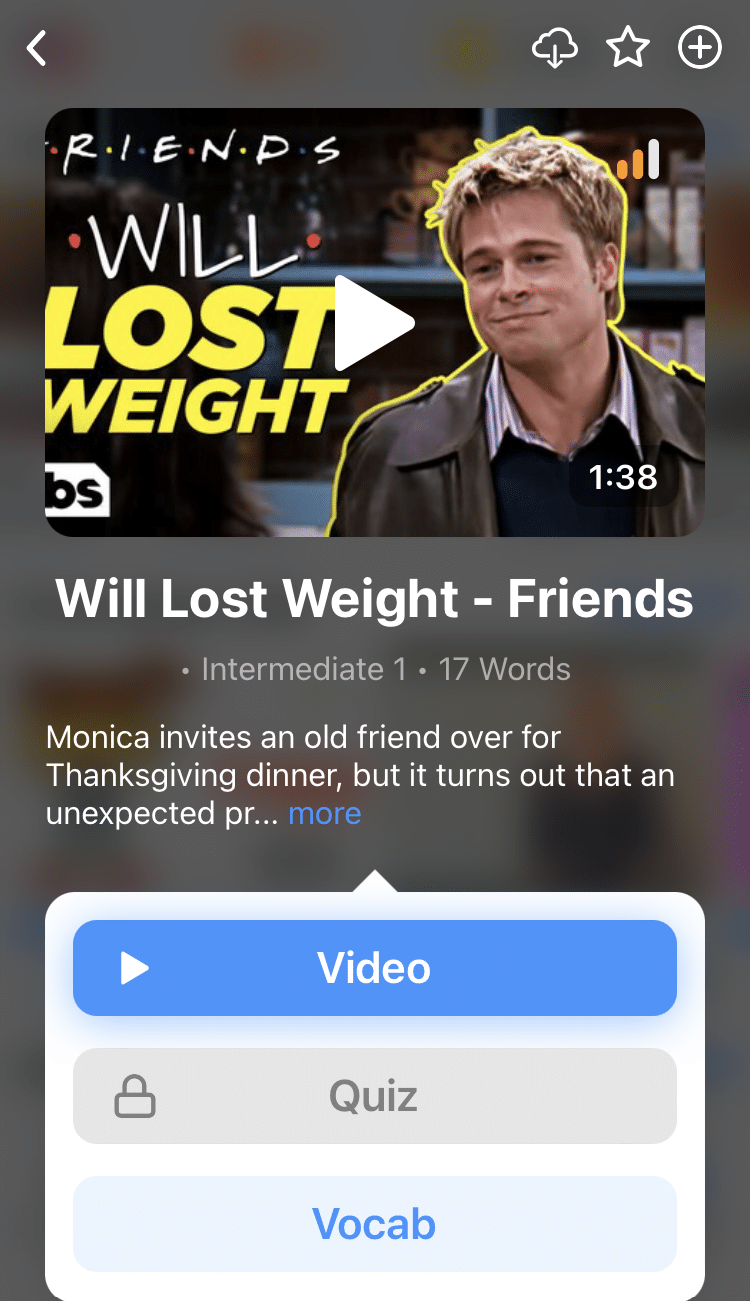
The Common Types of English Conjunctions
Most English conjunctions are short, teeny-tiny words that you might not even notice in a sentence.
But they’re everywhere, and they’re some of the most important English words.
They make up the sentences you speak every minute of every day, so it makes sense to learn English conjunctions.
Contents
- What Are Conjunctions?
- Coordinating Conjunctions
- Subordinating Conjunctions
- Correlative Conjunctions
- How to Practice English Conjunctions
- And One More Thing...
Download: This blog post is available as a convenient and portable PDF that you can take anywhere. Click here to get a copy. (Download)
What Are Conjunctions?
A conjunction is a part of speech, just like a noun, verb or pronoun. The basic purpose of a conjunction is to combine other parts of speech.
Conjunctions can combine two basic words or clauses. You can also take two sentences and combine them into one sentence with a conjunction.
There are three common types of English conjunctions: coordinating, subordinating and correlative.
Let’s break up the following conjunctions using each of these three categories. We’ll start with the simplest type (coordinating conjunctions) before moving on to more difficult territory.
Coordinating Conjunctions
Coordinating conjunctions connect two sentences or ideas together.
There are seven coordinating conjunctions and it’s easy to remember them with the acronym FANBOYS: for, and, nor, but, or, yet, so.
Here are the definitions and uses of each coordinating conjunction, as well as some example sentences.
1. For
You’re providing a reason for something (similar to the word “because,” which we’ll cover later in this post).
I eat at the café every weekend, for they serve the best bagels in town.
2. And
“And” joins two ideas, things or sentences together.
I have two cats and one dog.
I drink coffee in the morning, and I drink wine in the evenings.
3. Nor
When you have a negative statement, “nor” adds another negative alternative.
My mom was not happy, nor was she upset. She didn’t care.
4. But
This conjunction connects two contrasting ideas/things.
I want to go to the movies, but Sarah wants to go out to eat.
If you said “I want to go to the movies, and Sarah wants to go out to eat,” that would imply that you and Sarah are going to do both activities.
Using the word “but” communicates that you are going to do either one or the other.
5. Or
“Or” presents an alternative to an option.
Would you rather wear a dress or jeans?
We can go to the movies or we can go out to eat.
6. Yet
When you present a statement, “yet” presents an idea that contrasts the first statement logically.
I don’t like soda, yet I think root beer floats are delicious.
7. So
This conjunction gives a reason for something.
I have to wake up early, so I don’t stay out late.
John is struggling in his math class, so he hired a tutor.
Subordinating Conjunctions
Subordinating conjunctions connect a dependent clause to an independent clause.
An independent clause is a group of words that make up a sentence.
I know how to play basketball.
A dependent clause is a group of words that don’t make up a sentence on their own.
of my dad
Subordinating conjunctions connect these dependent clauses to independent clauses.
If you add the subordinating conjunction “because,” you can combine those two clauses:
Because of my dad, I know how to play basketball.
Now it’s clear that your dad taught you how to play basketball.
Occasionally, the group of words that make up a dependent clause can make up a complete sentence.
But for these sentences, the dependent clause still needs to be connected to an independent clause for context.
For example, if the dependent clause is “I wash my face” and the independent clause is “I can’t go to bed,” you can connect them with “until.”
I can’t go to bed until I wash my face.
There are a lot of subordinating conjunctions, but let’s just cover some of the most common!
8. Although
“Although” means “even though” or in spite of something.
Although she is a great creative writer, she has trouble writing academic papers.
9. Though
“Though” can often be used the same way as “although,” but likely to be found in the middle of a sentence.
Though I don’t drink milk, I do pour milk into my coffee.
I don’t drink milk, though I do pour milk into my coffee.
10. While
“While” refers to the moment something is/was happening.
The mailman delivered a package while you were at school.
While you were at school, the mailman delivered a package.
11. If
“If” introduces what to do in the event that something happens.
You can eat an apple if you get hungry before dinner.
If you get hungry before dinner, you can eat an apple.
12. Until
This conjunction means “up to the point that something happens.”
I can stay until 12:00 today, but then I have to go to work.
I am on vacation until January 5th.
13. Whether
Use “whether” as an indirect question that includes two possibilities.
I don’t know whether the class has been canceled.
She’s not sure whether she answered the question correctly.
14. After
Use “after” to talk about what happens in the period of time following something else.
I went to church after my hair appointment.
After my hair appointment, I went to church.
15. Before
“Before” is the opposite of “after.” Use “before” to talk about what happens in the period of time preceding something else.
I had a hair appointment before I went to church.
Before I went to church, I had a hair appointment.
16. Because
“Because” explains the reason for something.
I’m staying home tonight because Sarah canceled our plans.
17. Since
The primary use of “since” is to talk about the amount of time that something has been happening.
You can also use “since” as a synonym for “because.”
She has been wearing makeup since she was 16 years old.
He has been afraid of driving since the car crash last year.
I’m staying home tonight since Sarah canceled our plans.
18. When
This conjunction refers to the time that something was happening.
I loved ice cream when I was a kid.
When I was a kid, I loved ice cream.
19. Where
The conjunction “where” can be used to mean “whereas.”
Where some people don’t care about politics, others consider it one of the most important things in their lives.
20. How
“How” describes the way that something is or happens.
Tell me the story of how you and Mom fell in love.
21. Than
When you’re comparing two things, “than” can be used to introduce the second thing.
He’s much nicer than his sister.
I’d rather eat at a restaurant than at home.
Correlative Conjunctions
Correlative conjunctions are conjunctions that come in pairs. You need both words for the sentence to make sense, and they must be in the correct order.
22. Whether… or
I briefly mentioned this pairing when discussing “whether” previously. Use “whether… or” to talk about two options.
Have you decided whether you want to wear the red shirt or the blue shirt?
Whether we leave at 8:00 or 8:30, we’re going to get stuck in traffic.
You’re going to eat your vegetables, whether you like it or not.
(Note: “Whether you like it or not” is a common phrase for expressing that someone doesn’t have a choice in the matter. It’s probably most common for parents to say to children.)
23. Either… or
These words express two alternatives. It can be confusing to decide between using “whether… or” or “either… or,” but here’s the main difference:
“Whether… or” is usually used when you’re trying to make a decision. “Either… or” is typically used to compare two nouns or options.
It’s tricky, but here are some examples of “either… or.”
This summer, I want to visit either France or England.
Either we can eat Chinese food, or I’ll make food at home.
I want to attend either Harvard or Yale.
24. Neither… nor
“Neither… nor” is very similar to “either… or.” The difference is that you use “neither… nor” in a negative statement.
Neither Cindy nor her husband will attend the parent-teacher conference tomorrow.
Pat likes neither big cities nor small towns. She prefers small cities, like Greenville.
Neither my brother nor my sister is a good singer.
25. Both… and
Use this pair to talk about two related things.
I’m studying both theater and communications at college.
Let’s order both mozzarella sticks and cheese dip.
My daughter takes both ballet classes and karate classes. She likes to be active!
26. Not only… but also
“Not only… but also” is basically a way of saying, “But wait… there’s more!” It’s a way to convey more information, often information that is unexpected or impressive.
I want to be not only a wife and mother, but also a doctor.
My son not only plays basketball and football, but also takes piano lessons.
My dog not only knows how to sit, but also how to shake and lie down.
27. If… then
The words “if” and “then” separate two clauses. Use the pair to talk about something that will happen as a result of something else happening.
If Bob graduates from college, then he can apply for the job opening at Google.
If I order a medium pizza instead of a small, then I’ll have leftovers to eat tomorrow.
Joe is allergic to peanut butter. If he accidentally eats some, then his tongue will swell up.
How to Practice English Conjunctions
When it comes to conjunctions, the best way to learn how they’re used is just to dive in!
Conjunctions don’t always have clear, easy-to-understand definitions.
Instead, they have rules about when to use them.
So, the best way to learn is to practice using them in sentences correctly. 
If you want an app dedicated exclusively to conjunctions, you might like easyLearn Conjunctions & Interjections. It’s a simple app that’s a great place for true beginners to start.
With eight different question formats and plenty of quizzes, this app can help you master English conjunctions.
It’s also helpful listening to them being used in real-life scenarios.
For instance, you can watch authentic English language videos to hear how native speakers use conjunctions in everyday speech.
The language program FluentU has trailers, music videos and quick scenes that are useful for this exercise.
FluentU takes authentic videos—like music videos, movie trailers, news and inspiring talks—and turns them into personalized language learning lessons.
You can try FluentU for free for 2 weeks. Check out the website or download the iOS app or Android app.
P.S. Click here to take advantage of our current sale! (Expires at the end of this month.)

Now you know the different types of conjunctions and how to use them.
You can not only recognize an English conjunction in a sentence, but also create your own sentences with them.
After you memorize and practice your conjunctions, you’ll be able to impress all your English-speaking friends.
What are you waiting for?
Download: This blog post is available as a convenient and portable PDF that you can take anywhere. Click here to get a copy. (Download)
And One More Thing...
If you like learning English through movies and online media, you should also check out FluentU. FluentU lets you learn English from popular talk shows, catchy music videos and funny commercials, as you can see here:
The FluentU app and website makes it really easy to watch English videos. There are captions that are interactive. That means you can tap on any word to see an image, definition, and useful examples.
For example, when you tap on the word "searching," you see this:
Learn all the vocabulary in any video with quizzes. Swipe left or right to see more examples for the word you’re learning.

FluentU helps you learn fast with useful questions and multiple examples. Learn more.
The best part? FluentU remembers the vocabulary that you’re learning. It gives you extra practice with difficult words—and reminds you when it’s time to review what you’ve learned. You have a truly personalized experience.
Start using the FluentU website on your computer or tablet or, better yet, download the FluentU app from the iTunes or Google Play store. Click here to take advantage of our current sale! (Expires at the end of this month.)












